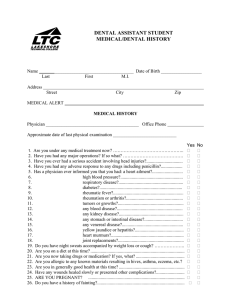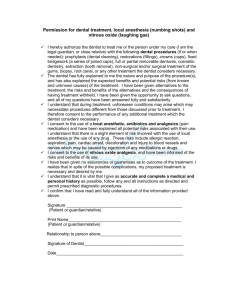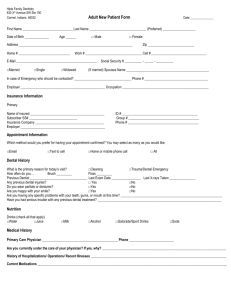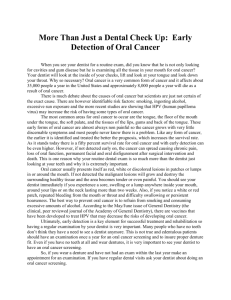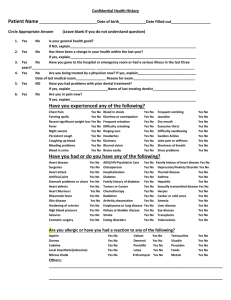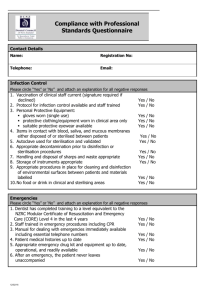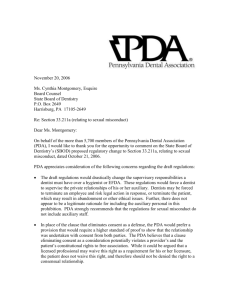Information for Parents-Pediatric Dentistry
advertisement
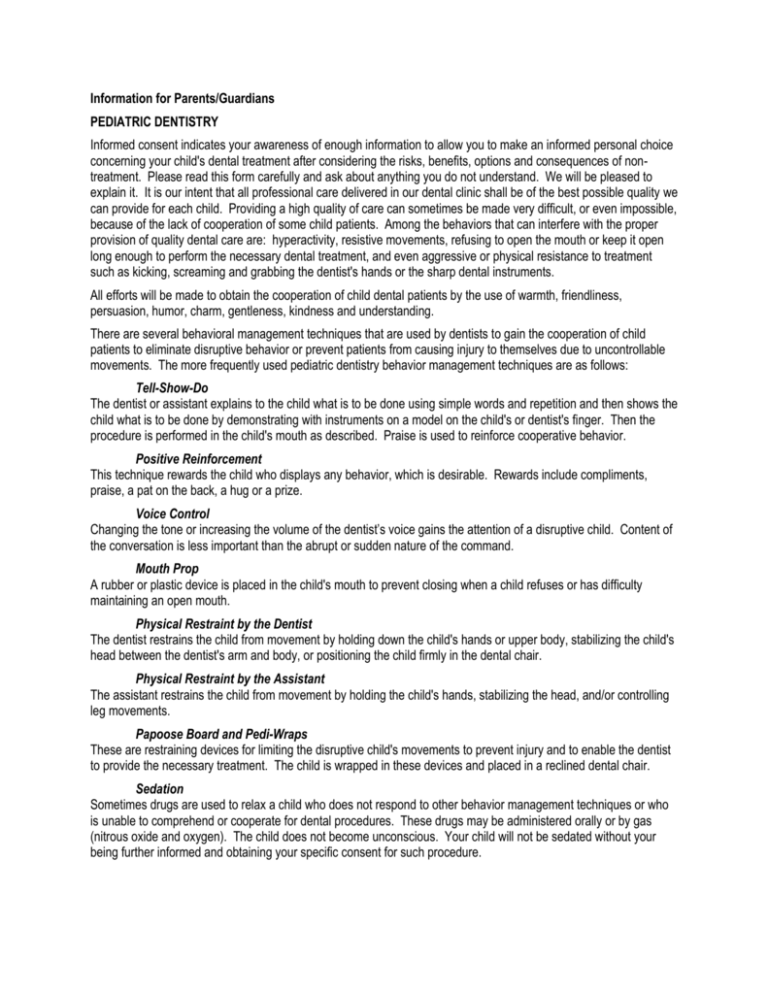
Information for Parents/Guardians PEDIATRIC DENTISTRY Informed consent indicates your awareness of enough information to allow you to make an informed personal choice concerning your child's dental treatment after considering the risks, benefits, options and consequences of nontreatment. Please read this form carefully and ask about anything you do not understand. We will be pleased to explain it. It is our intent that all professional care delivered in our dental clinic shall be of the best possible quality we can provide for each child. Providing a high quality of care can sometimes be made very difficult, or even impossible, because of the lack of cooperation of some child patients. Among the behaviors that can interfere with the proper provision of quality dental care are: hyperactivity, resistive movements, refusing to open the mouth or keep it open long enough to perform the necessary dental treatment, and even aggressive or physical resistance to treatment such as kicking, screaming and grabbing the dentist's hands or the sharp dental instruments. All efforts will be made to obtain the cooperation of child dental patients by the use of warmth, friendliness, persuasion, humor, charm, gentleness, kindness and understanding. There are several behavioral management techniques that are used by dentists to gain the cooperation of child patients to eliminate disruptive behavior or prevent patients from causing injury to themselves due to uncontrollable movements. The more frequently used pediatric dentistry behavior management techniques are as follows: Tell-Show-Do The dentist or assistant explains to the child what is to be done using simple words and repetition and then shows the child what is to be done by demonstrating with instruments on a model on the child's or dentist's finger. Then the procedure is performed in the child's mouth as described. Praise is used to reinforce cooperative behavior. Positive Reinforcement This technique rewards the child who displays any behavior, which is desirable. Rewards include compliments, praise, a pat on the back, a hug or a prize. Voice Control Changing the tone or increasing the volume of the dentist’s voice gains the attention of a disruptive child. Content of the conversation is less important than the abrupt or sudden nature of the command. Mouth Prop A rubber or plastic device is placed in the child's mouth to prevent closing when a child refuses or has difficulty maintaining an open mouth. Physical Restraint by the Dentist The dentist restrains the child from movement by holding down the child's hands or upper body, stabilizing the child's head between the dentist's arm and body, or positioning the child firmly in the dental chair. Physical Restraint by the Assistant The assistant restrains the child from movement by holding the child's hands, stabilizing the head, and/or controlling leg movements. Papoose Board and Pedi-Wraps These are restraining devices for limiting the disruptive child's movements to prevent injury and to enable the dentist to provide the necessary treatment. The child is wrapped in these devices and placed in a reclined dental chair. Sedation Sometimes drugs are used to relax a child who does not respond to other behavior management techniques or who is unable to comprehend or cooperate for dental procedures. These drugs may be administered orally or by gas (nitrous oxide and oxygen). The child does not become unconscious. Your child will not be sedated without your being further informed and obtaining your specific consent for such procedure.


